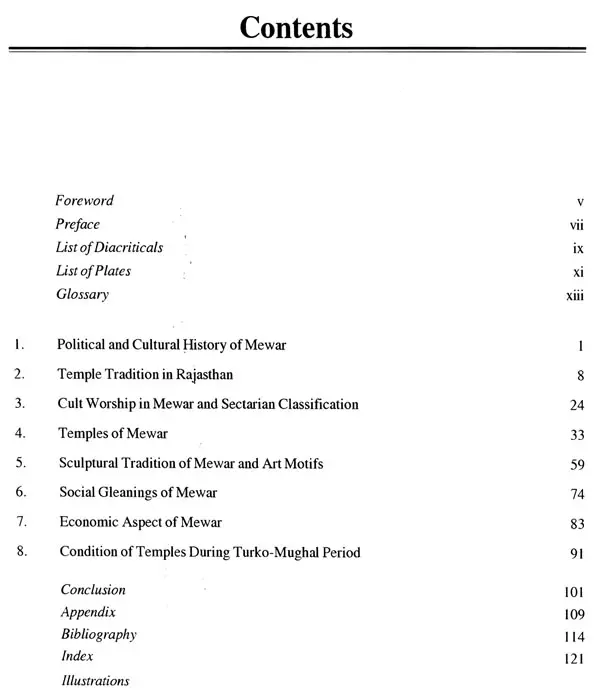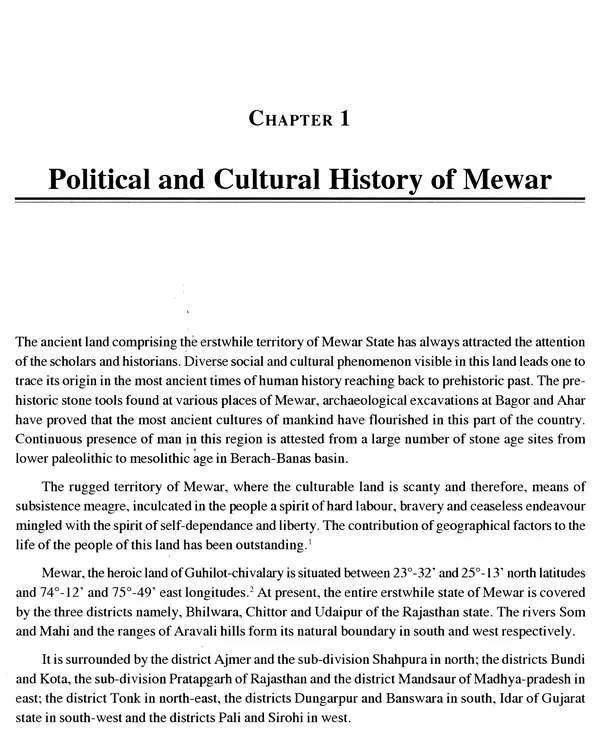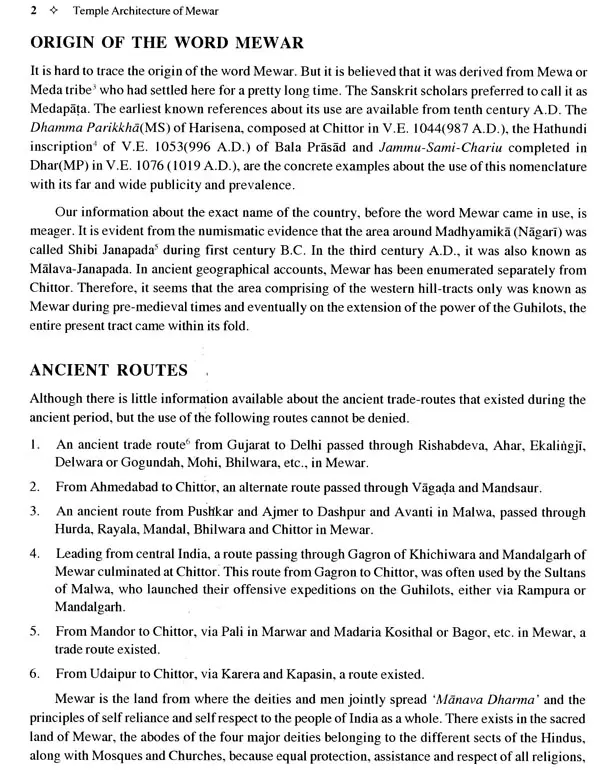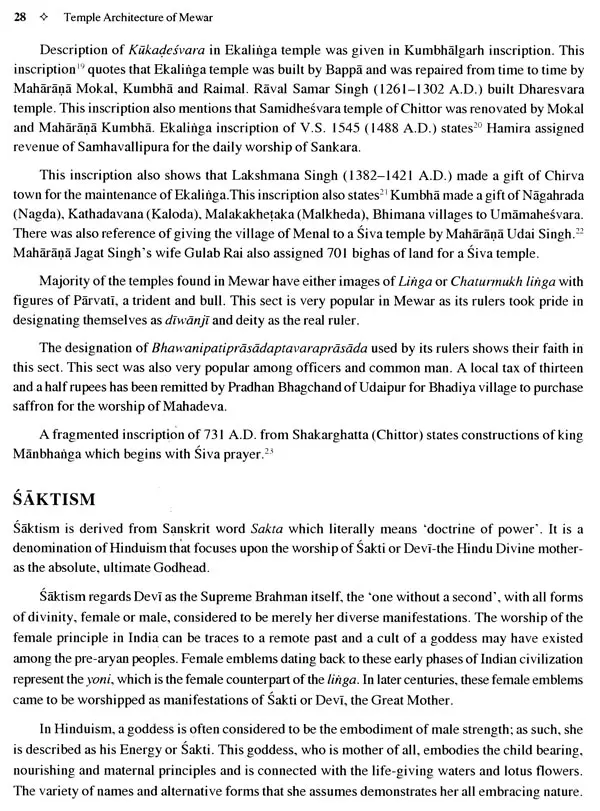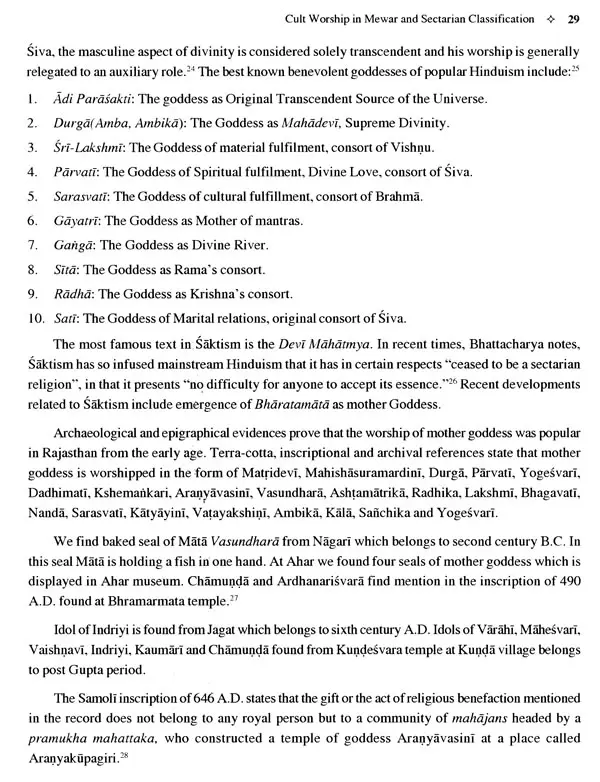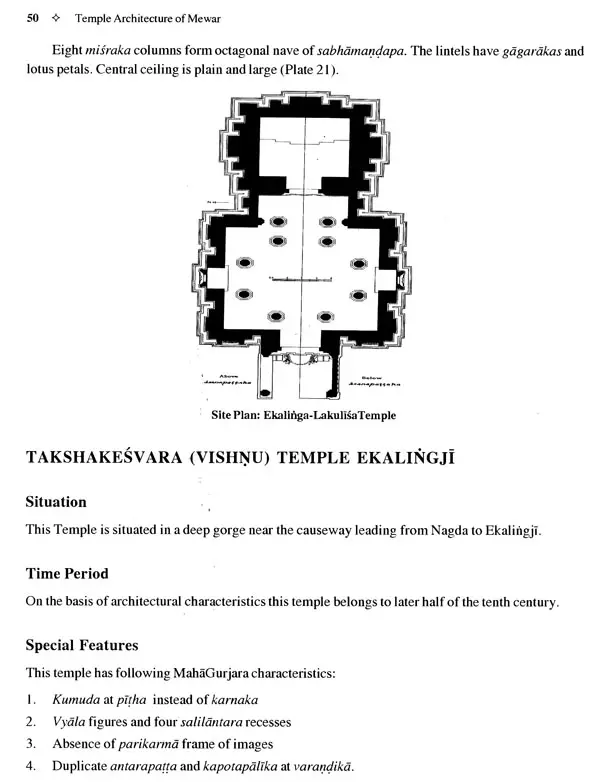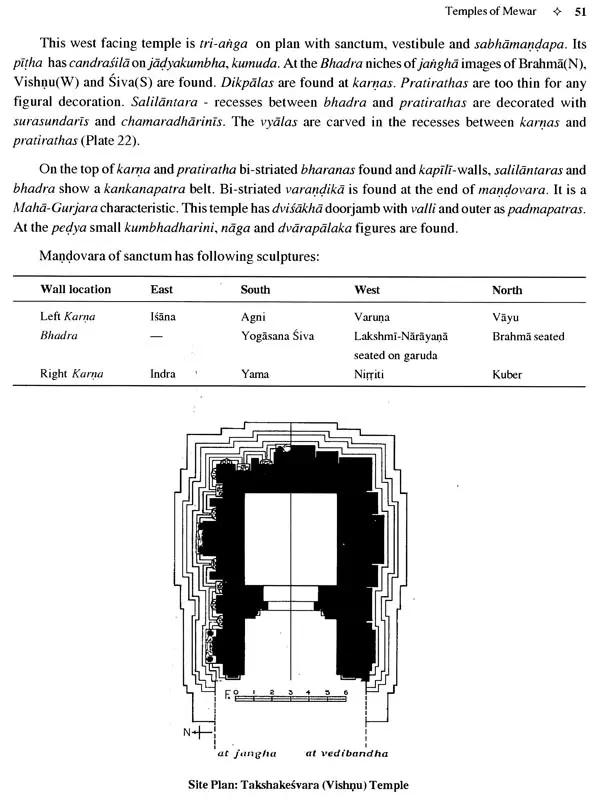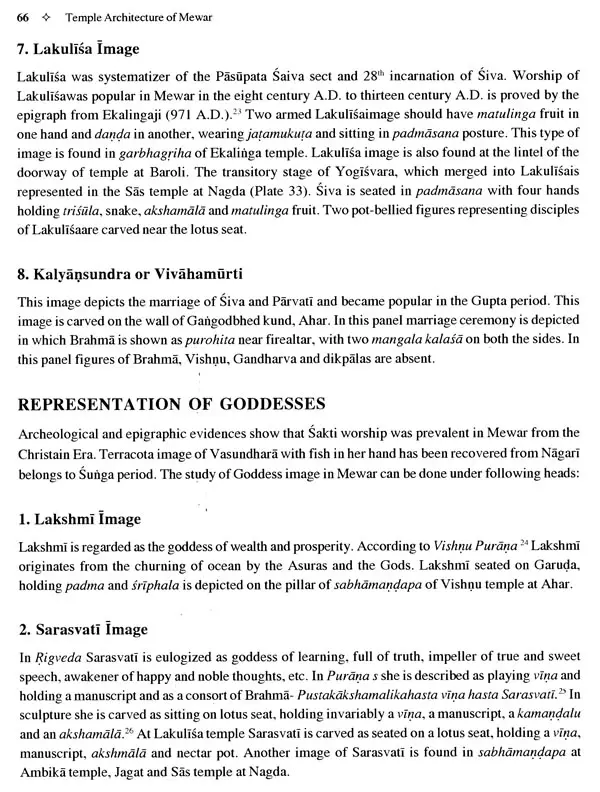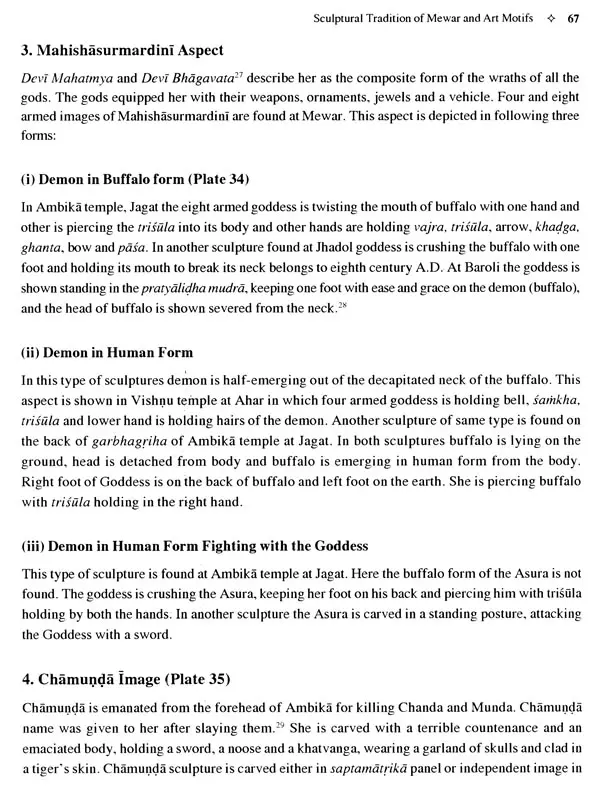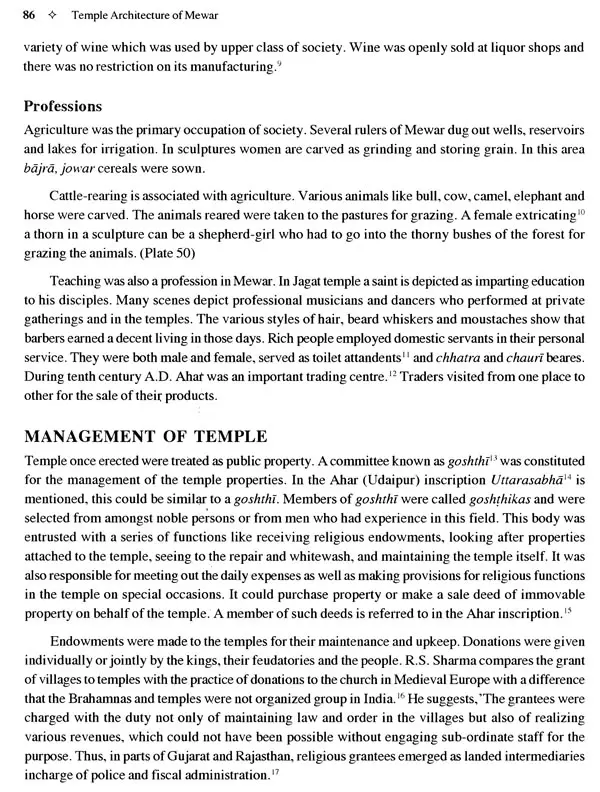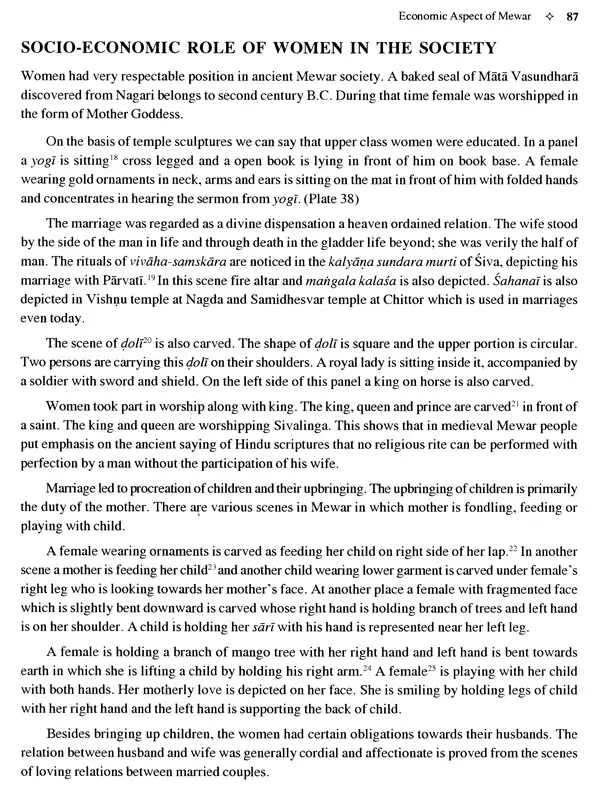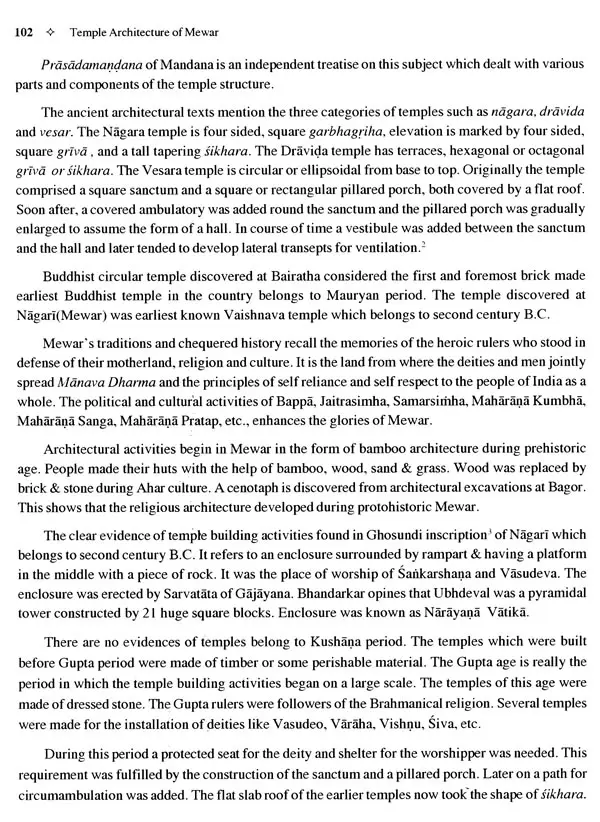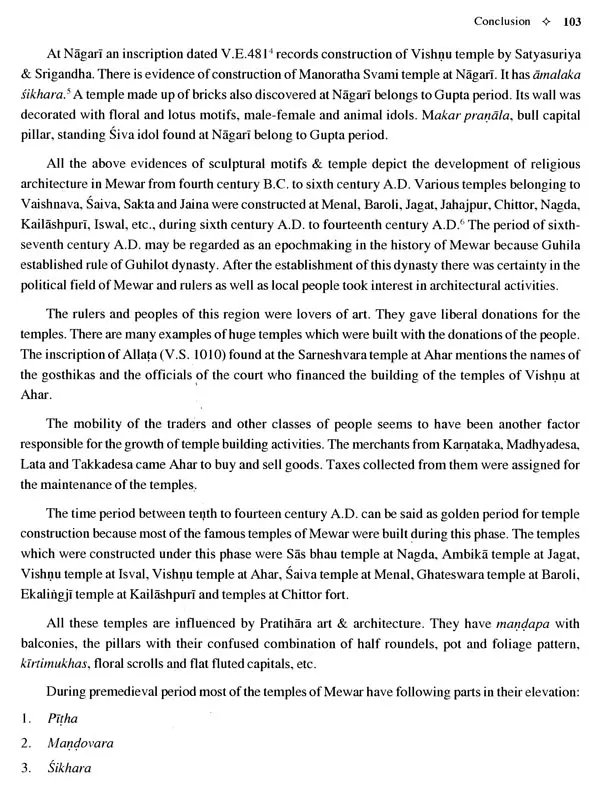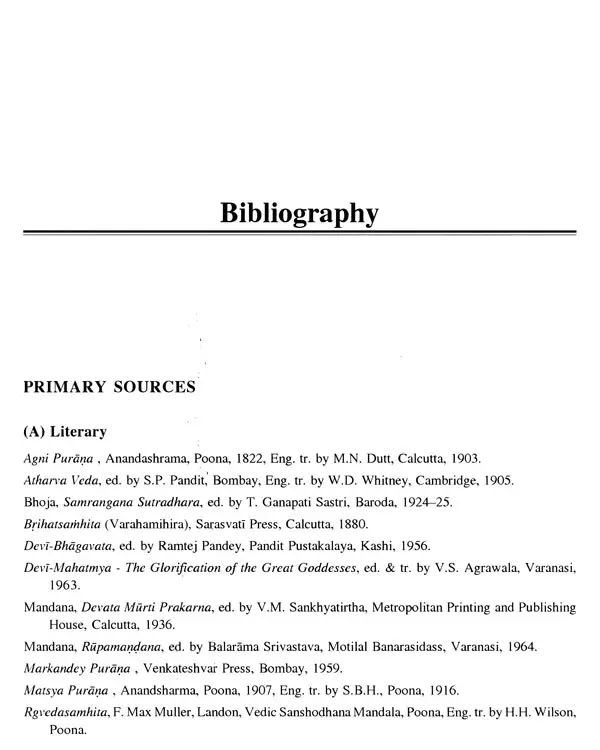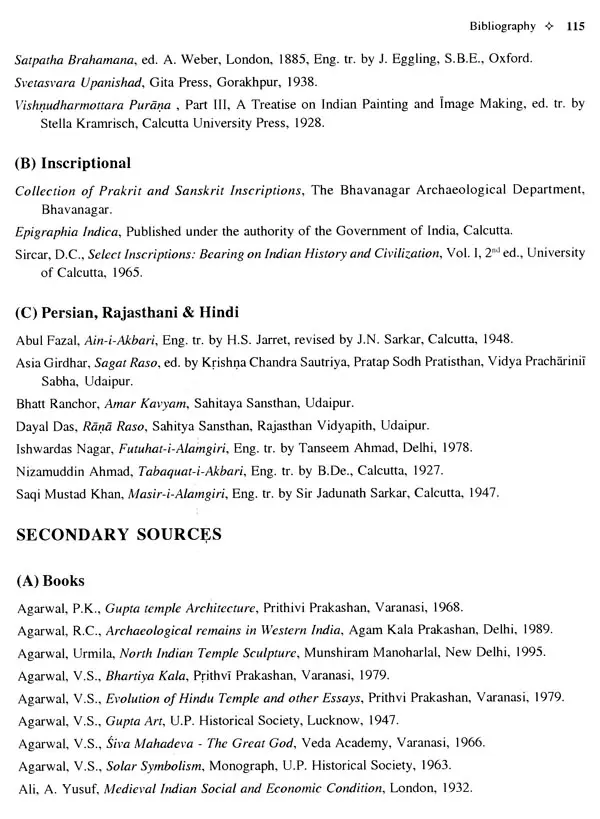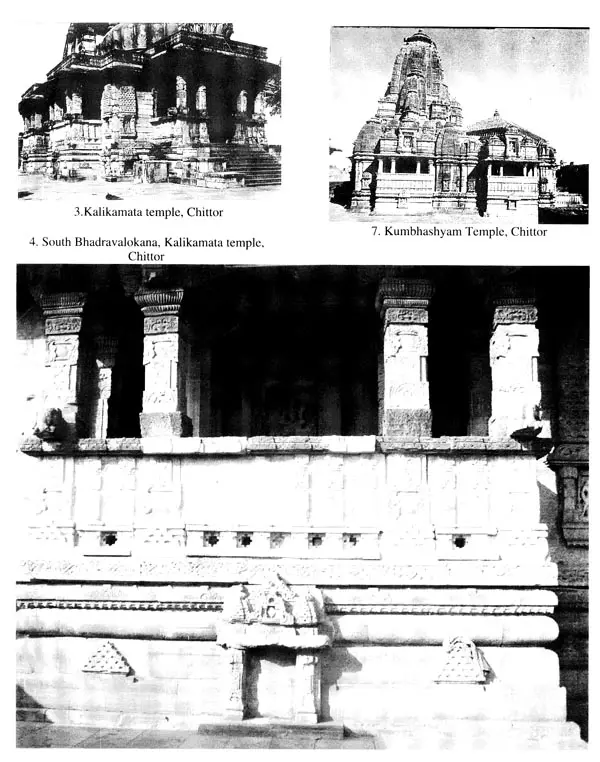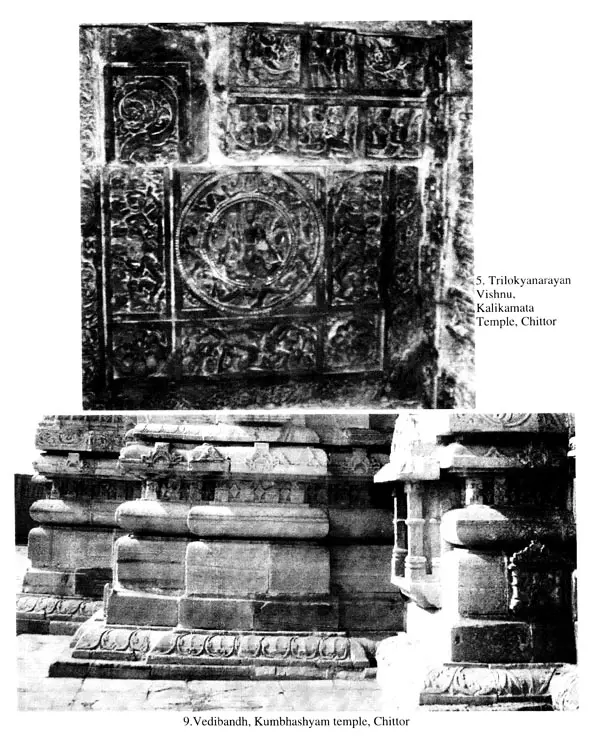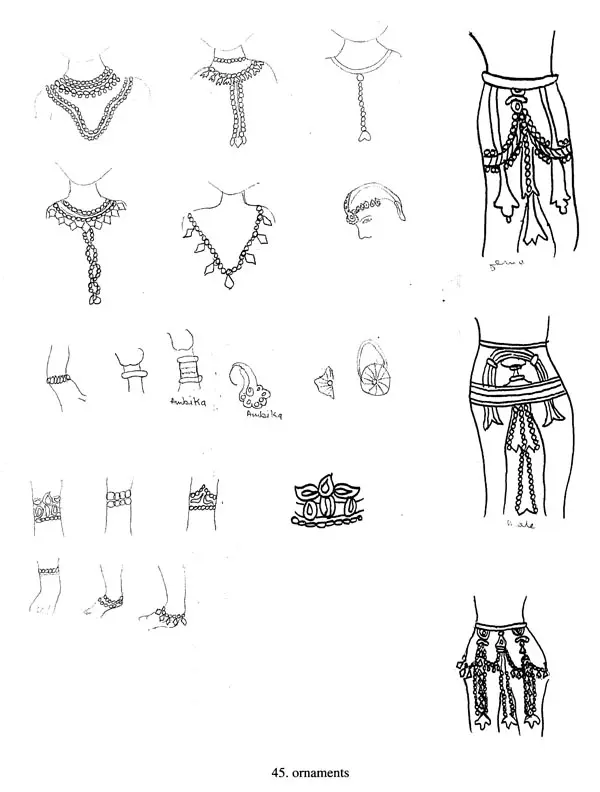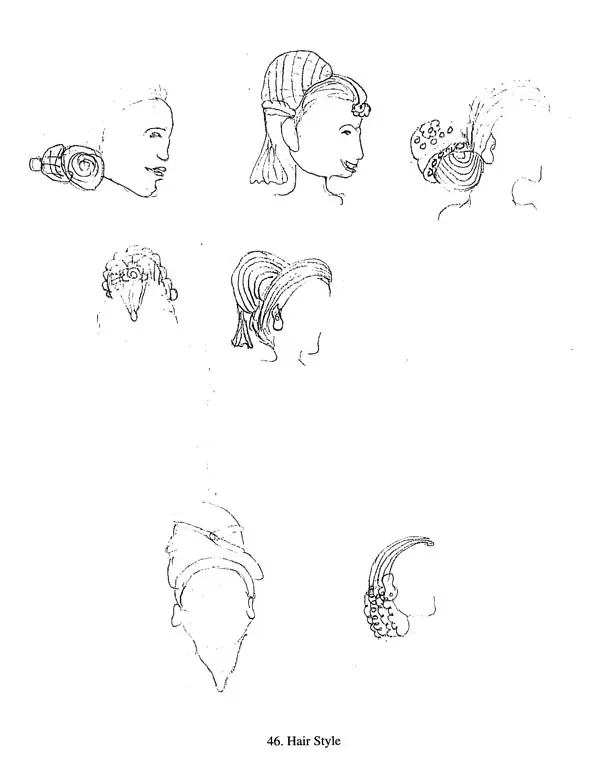
Temples Architecture of Mewar- Socio-Cultural Aspect
Book Specification
| Item Code: | UAE298 |
| Author: | Shobha Guleria |
| Publisher: | Literary Circle, Jaipur |
| Language: | English |
| Edition: | 2016 |
| ISBN: | 9789381951453 |
| Pages: | 162 (Throughout B/w Illustrations) |
| Cover: | HARDCOVER |
| Other Details | 11.00 X 9.00 inch |
| Weight | 740 gm |
Book Description
The book "Temple architecture of Mewar Socio-cultural Aspect" authored by Dr. Shobha Guleria has not only delighted the heart of the art lovers, but she has also provide a hoard of information for the cultural history of Mewar. It has served as one of the most valuable source material to reconstruct the material culture, social history and day to day life of the ancient Mewar. Author has attempted to understand the social context of the art and sculpture of Mewar. She has also provided the visual counterparts to the literacy terms and supported her description by the relevant literacy sources.
From seventh century onwards, which is the most productive period of the evolution of temple architecture, the climax is exemplified by many them built in this region between 1000 A.D. to 1300 A.D. Large number of monuments have, no doubt, been destroyed by the ravages of nature and man. But. those preserved give an impression that art and architecture of Mewar, reflecting a cultural continuity from the Gupta age to fifteenth century, reached a stage of culmination in the whole world manifested, 'dershan-vishva-rupa' and its detailed analysis could itself constitute an encyclopedic commentary on the culture of the times.
The present work entitled "Temple Architecture of Mewar-socio cultural aspect" is substantially a reproduction of the thesis of Dr. Shobha Guleria which earned her a Ph. D. degree of the University of Rajasthan in 2011. It is characterized by a holistic approach seeking to cover inquiry into socio- economic gleanings from sculptures and architecture, beside the iconography, art and aesthetic aspects.
The work also analyses epigraphically and literary evidences with a view to understanding the trends of decline in the architecture of the region during the Sultanate period and onwards. The work is well documented and illustrated and should be a welcome addition to the architectural and art study of Rajasthan. It is hoped that the present work will inspire other young researches to undertake similar research projects. One may also expect Dr. Guleria to keep up her interest and enthusiasm for further study of the subject to enrich it with greater details an minute observations which are sometimes found wanting in a doctoral dissertation.
The present work attempts. to study Temple Architecture of Mewar with socio-cultural aspects.
In this work an effort has been made to describe social, economic, religious and moral life of society of medieval Mewar. I have tried to portray life from tangible to intangible, i.e. various contemporary literary works and inscriptions are used to explain glimpses of contemporary life shown in sculptures. I have been inspired by works done by Vidhya Prakash on Khujaraho and Asha Kalia on Temples of Osia. The present work is a slightly enlarged version of my thesis approved for the Ph.D. Degree by University of Rajasthan in 2011 under the supervision of Dr. Vijaya Kumari.
The Hindu temple succinctly embodies the basic values of Indian life and thought. It represents the cosmological symbolism in an aesthetic grab. Ghosundi inscription of second century B.C. shows religious faith and image worship performed by people of Mewar. Beside the rulers, queens, wife of commander in chief, mercantile class built various temples and gave liberal donation for the maintenance of these temples. Most of the temples of Mewar belong to maha- gurjara style, characterized by kunjaraksa at antarapatta. These temples are influenced by Pratihara style, nirandhar in plan and has karnaka and graspatti.
Most of the magnificent temples of Mewar were built during eight to twelfth century AD. During Turko-mughal period temples were desecrated in context of military conflicts by field commanders, governors, sultans, etc. Tabquat-i-Akbari, Masir-i-Alamgiri has references of temple demolition in Mewar. After seventeenth century A.D. rulers of Mewar were not very powerful and due to Maratha incursions and independence of feudal lords integrity of Mewar disturbed. This resulted in declined architectural activity. Various secular scenes carved on mandovara and rupapati of temples we can get an idea of contemporary socio-cultural life of people of Mewar. Education was given to both male and females. Female performed daily household works, assists male in economic activities, employed as dancers in temples and royal courts. Goldsmith, beadmaker, carpenter, mason, architect, sculptor, weaver, textile worker were part of economic life of Mewar people.
I express a deep sense of gratitude to Prof. R.S. Misra, Reader (Rtd.), Department of History and Indian Culture, University of Rajasthan. His sense of historical judgment and inspiring guidance enabled me to study Temple Architecture of Mewar in a historical perspective. I am also deeply indebted to Dr. Vibha Upadhyaya, Head, Department of History and Indian Culture, University of Rajasthan for her timely guidance to carryon work in proper direction. I wish to record my indebtedness to Mr. Jagat Pal Singh I.A.S.(Rtd.) whose guidance in great detail created interest in me to study this subject I express my sincere thanks to Dr. Chandramani Singh, former Director, Documentation, Jawahar Kala Kendra, Jaipur, for writing a Foreword to this work.
I am thankful of staff of american Institute of Indian Studies, Gurgaon, Pratap Sodh Pratisthan Udaipur, Jawahar Kala Kendra Jaipur, Victoria hall Museum, Udaipur, Ahar museum, Ahar, etc. and Mr. Sapan for undertaking publication of this work.
Before I conclude I owe enormous indebtedness to my family members. Their encouragement and contribution has been tremendous. I acknowledge with utmost humility all they have done for me.
Book's Contents and Sample Pages
